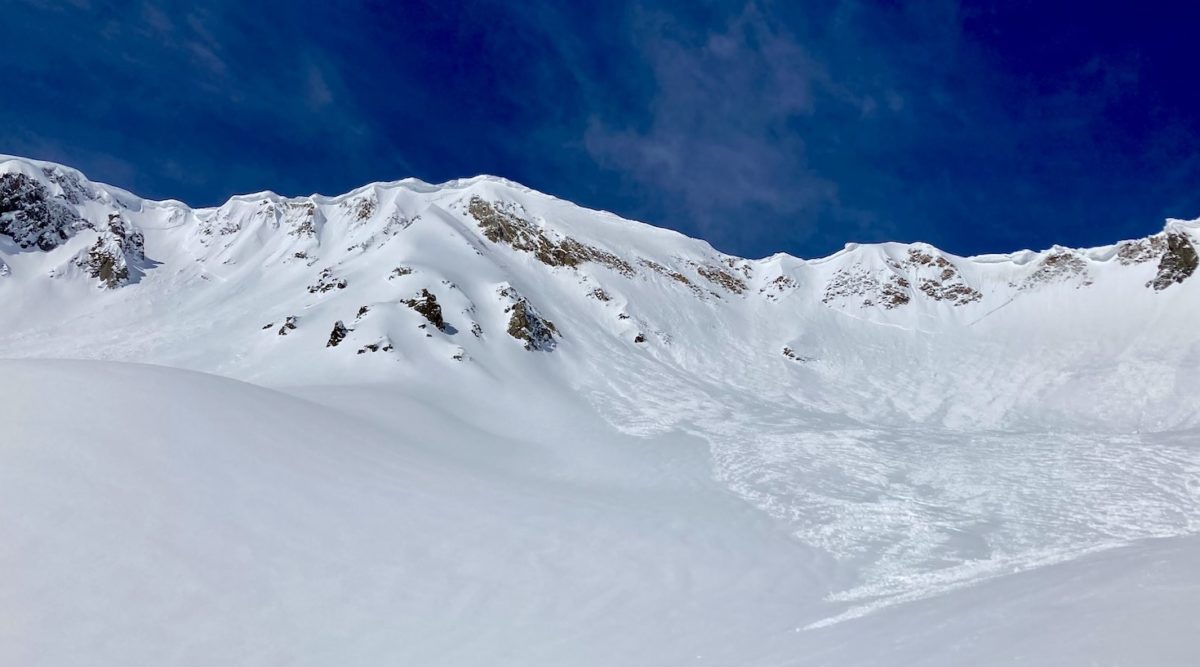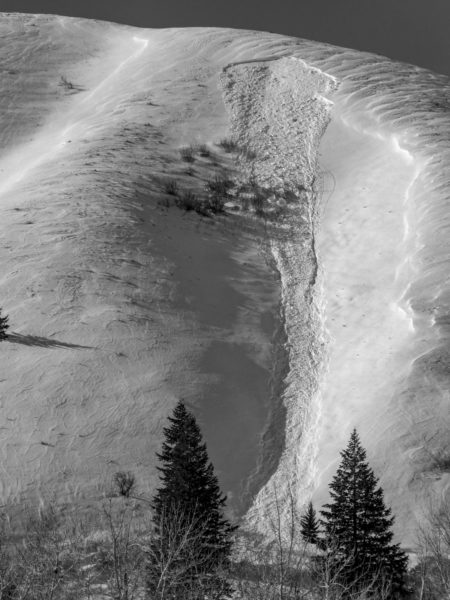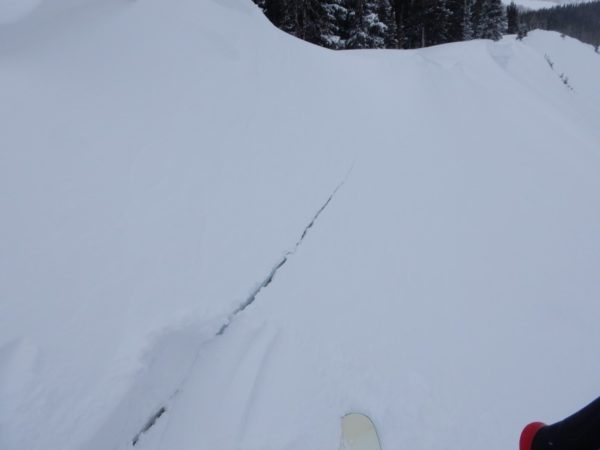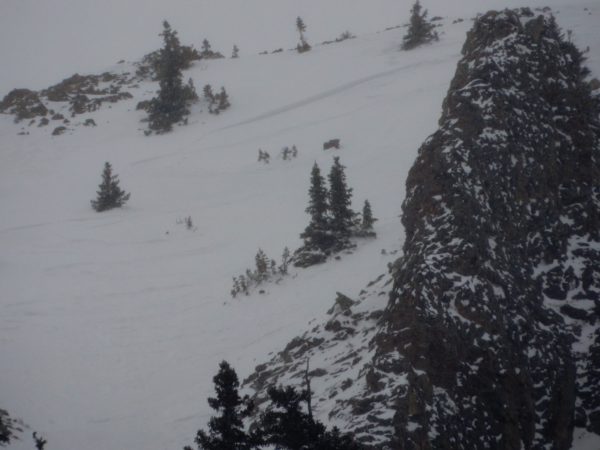Release of a cohesive layer of snow (a slab) formed by the wind drifted snow.
Wind transports snow from the upwind sides of terrain features and deposits it into thicker drifts on the downwind side. This forms slabs in somewhat predictable and specific locations, such as below the leeward side of ridges or in crossloaded gullies. Wind Slabs can range from soft to hard, thin to thick, and are often smooth, rounded, and sometimes sound hollow. Blowing snow and cracking or collapsing in drifted snow are clear warning signs of the problem. Wind Slabs can be avoided by sticking to sheltered or wind-scoured areas. Wind Slabs that form over a persistent weak layer (e.g. surface hoar, depth hoar, or near-surface facets) may be termed Persistent Slabs or may develop into Persistent Slabs, in which case, their instabilities will last longer.

Wind Slabs tend to form in predictable locations, such as below leeward ridgelines, exemplified in this photo. Credit: Crested Butte Avalanche Center

Wind Slabs also form in crossloaded terrain features such as in gullies like this, or behind ribs, tree fences, or rollovers. Credit: Sawtooth Avalanche Center


